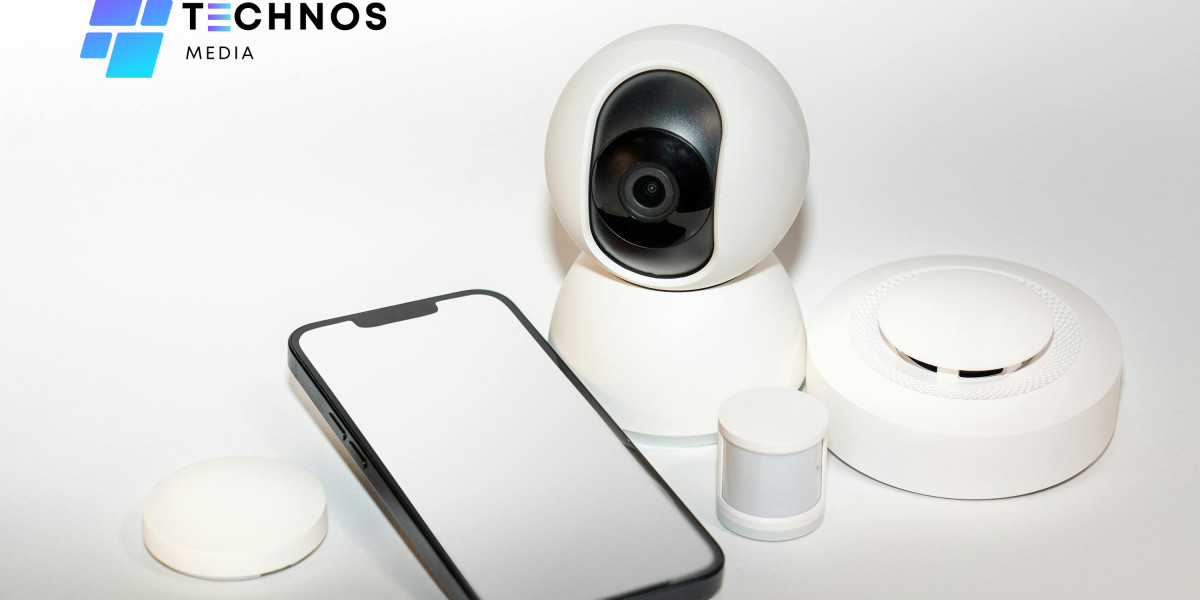1. Introduction: The Rise of Smart Devices
Smart devices are electronics equipped with connectivity, sensors, and processing power, enabling them to gather data, interact with users, and communicate with other devices or networks. Their emergence has reshaped industries—from home automation and healthcare to education and entertainment.
What differentiates a smart device from traditional electronics is its ability to perceive its environment, process information, and make real-time decisions. This intelligence is built on an intricate network of integrated technologies.
2. Embedded Sensors: Enabling Environmental Awareness
Sensors are foundational to any smart device. They function as the sensory organs, collecting input from the physical world and converting it into digital signals.
Common Sensor Types:
Accelerometers and gyroscopes: Detect orientation and movement (used in phones and wearables).
Temperature and humidity sensors: Found in smart thermostats and HVAC systems.
Light sensors: Control screen brightness or automatic lighting systems.
Proximity sensors: Enable touchless interaction or screen dimming.
Biometric sensors: Monitor vital signs like heart rate and oxygen saturation.
Without sensors, smart devices would be unaware of their surroundings and incapable of responding in meaningful ways.
3. Microcontrollers and Microprocessors: The Device Brain
At the core of every smart device is a microcontroller or microprocessor that serves as its brain. These chips perform calculations, execute instructions, and manage communications between components.
Microcontrollers (MCUs) are ideal for small, low-power devices like wearables and smart bulbs. They contain CPU, memory, and peripherals on a single chip.
Microprocessors (MPUs) offer higher computing capabilities and are used in complex devices like smartphones or smart TVs.
These processors interpret sensor data, execute software logic, and run user applications, making them crucial to device functionality.
4. Connectivity Modules: Creating a Networked World
For a device to be "smart," it must connect—whether to the internet, other devices, or users. Connectivity modules provide the channels through which devices exchange information.
Key Communication Protocols:
Wi-Fi: High-speed, long-range connection ideal for home networks.
Bluetooth and BLE (Bluetooth Low Energy): Used in short-range communication like wireless headphones or fitness trackers.
Zigbee and Z-Wave: Low-power mesh networks for home automation devices.
5G/4G/LTE: Mobile broadband for smart vehicles and wearable tech.
NFC (Near Field Communication): Enables contactless payments and device pairing.
These protocols determine how efficiently and securely a device can communicate within its ecosystem.
5. Artificial Intelligence and Machine Learning
AI and ML give smart devices the capability to learn, adapt, and make informed decisions. These technologies analyze the data collected by sensors and use it to predict outcomes, personalize user experiences, and optimize performance.
Examples of AI in Smart Devices:
Voice assistants (e.g., Google Assistant, Alexa): Understand speech, interpret intent, and provide responses.
Smart cameras: Use AI to recognize faces, identify objects, or detect unusual activity.
Health monitors: Learn user behavior to provide insights and alerts.
Smart appliances: Suggest recipes or adjust settings based on user preferences.
As these algorithms become more advanced, the intelligence of smart devices increases exponentially.
6. Cloud and Edge Computing: Managing Data Efficiently
Smart devices generate enormous volumes of data. Managing and processing this data efficiently is essential for real-time responsiveness and user satisfaction.
Cloud computing stores and processes data remotely. It allows smart devices to be lightweight, as heavy computations are offloaded to powerful data centers.
Edge computing processes data locally, on or near the device. This reduces latency, enhances privacy, and ensures critical functions continue during connectivity loss.
Together, these technologies balance performance, security, and functionality.
7. Power Management Systems: Efficiency and Longevity
Battery life and energy consumption are critical, especially for portable and always-on smart devices. Advanced power management systems ensure that devices use energy efficiently without sacrificing performance.
Strategies for Power Optimization:
Low-power chipsets and sleep modes
Smart scheduling of active tasks
Energy harvesting (e.g., solar-powered sensors)
Battery management systems that monitor and optimize charging cycles
Efficient energy use extends the device lifespan and supports sustainability goals.
8. Secure Software and Firmware Architecture
Software controls every aspect of a smart device’s behavior, from basic functions to advanced applications. The embedded software must be robust, responsive, and secure.
Firmware is the permanent software programmed into the device’s read-only memory, governing low-level functions.
Operating systems (like Embedded Linux, Android Things, or RTOS) manage hardware resources and support application development.
Apps and APIs allow users to interact with devices and developers to extend their functionality.
Regular software updates ensure security, fix bugs, and add new features—making over-the-air update systems increasingly critical.
9. Security Protocols and Privacy Features
Smart devices often collect personal and sensitive information, making security a top priority. Without proper safeguards, they become vulnerable to cyberattacks, data breaches, and misuse.
Essential Security Measures:
Encryption: Protects data during transmission and storage.
Biometric authentication: Adds a secure, user-friendly access layer.
Two-factor authentication (2FA): Combines password and physical verification.
Secure boot and firmware validation: Prevents unauthorized software from running.
Security must be embedded into every layer of the device—from hardware to cloud integration—to maintain trust and reliability.
10. User Interface (UI) and User Experience (UX)
How users interact with smart devices is just as important as how they function. Interfaces have evolved to become more intuitive, voice-enabled, and gesture-sensitive.
Modern UI Features Include:
Touch displays: Found in smartphones, tablets, and appliances.
Voice interaction: Voice recognition allows for hands-free control.
Gesture recognition: Enables contactless interaction in smart TVs or public kiosks.
Augmented reality (AR): Enhances visual feedback and interactivity.
A seamless UX ensures user satisfaction, minimizes friction, and encourages adoption of smart technology.
11. Interoperability and Ecosystem Integration
For a truly smart environment, devices must work together. This requires interoperability—devices from different manufacturers following shared protocols and standards.
Examples of Ecosystem Integration:
A smart thermostat adjusting temperature based on motion detected by a smart camera.
A smartwatch sending health data to a fitness app on a smartphone.
A smart lock triggering home lighting and security systems when opened.
Standards like Matter, Open Connectivity Foundation (OCF), and support for APIs are enabling a more unified and connected user experience.
12. Applications in Real Life
The combination of all these technologies powers a wide range of real-world applications:
Smart Homes: Devices automate lighting, climate, and security systems.
Healthcare: Wearables monitor vital signs and alert medical personnel.
Retail: Smart shelves and checkout-free stores enhance shopping.
Agriculture: Smart sensors optimize irrigation and monitor soil health.
Transportation: Connected vehicles offer navigation, diagnostics, and safety features.
These use cases illustrate the vast potential of smart devices beyond simple convenience.
13. Challenges and Limitations
Despite their benefits, smart devices face challenges that require attention:
Privacy concerns: Devices collecting personal data can be misused.
Security vulnerabilities: Constant connectivity opens doors for cyber threats.
E-waste: Frequent upgrades contribute to electronic waste and environmental concerns.
Cost: High initial costs can deter widespread adoption in some regions.
Addressing these concerns is key to building a sustainable and ethical future for smart technology.
14. Conclusion: The Intelligence Behind Innovation
Smart devices are redefining how we live, work, and interact. But their "smartness" is not magic—it's the result of a sophisticated combination of software, hardware, sensors, and connectivity working seamlessly together.
The core technologies in smart devices—from embedded sensors and AI to cloud integration and security protocols—form the foundation of this innovation. These technologies continue to evolve, becoming faster, more efficient, and more accessible, promising a future where intelligence is embedded into everything around us.
As users and creators of technology, understanding these components helps us make informed decisions, appreciate the complexities behind our favorite gadgets, and envision the next wave of smart innovation.













